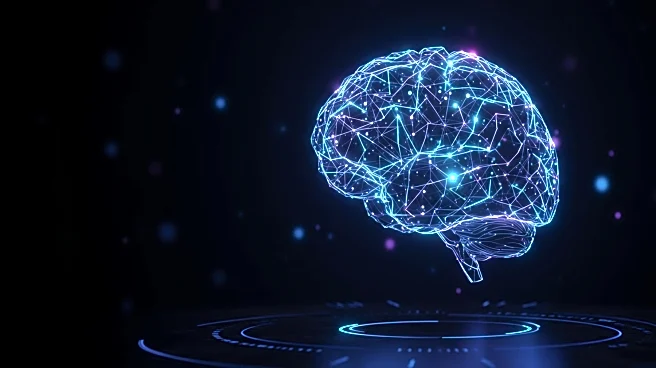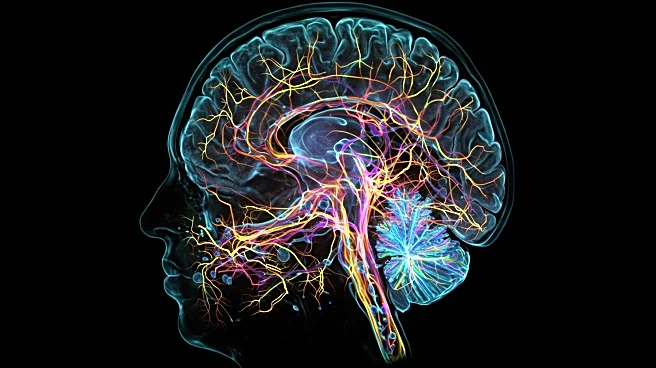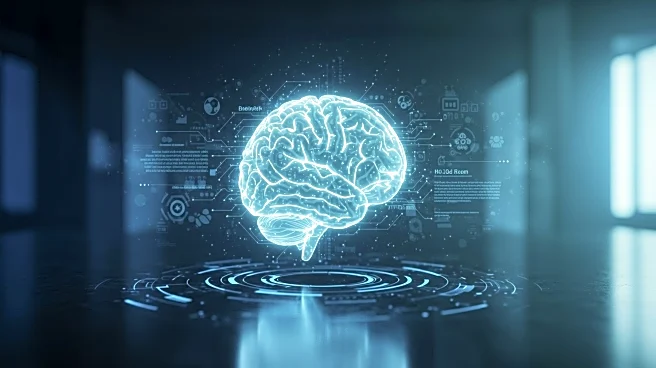What is the story about?
What's Happening?
A groundbreaking study led by Stanford Medicine neuroscientists has demonstrated a brain-computer interface (BCI) capable of decoding instructed inner speech with up to 74% accuracy. This BCI technology, developed in collaboration with multiple institutions, can interpret imagined speech from a large vocabulary of 125,000 words. The study involved participants with tetraplegia, who had sensors placed on speech-related areas of the cortex. The research highlights the potential of BCIs to assist individuals with disabilities by enabling control of external devices through thought, improving their quality of life.
Why It's Important?
This advancement in BCI technology represents a significant step forward in assistive technology for individuals with speech and movement impairments. By decoding inner speech, BCIs could offer new communication methods for those unable to speak, enhancing their independence and interaction with the world. The technology's ability to interpret a large vocabulary suggests potential applications in various fields, including healthcare and communication, potentially transforming the lives of millions of people with disabilities.
What's Next?
Further development and refinement of BCI technology could lead to more widespread adoption and integration into everyday life for individuals with disabilities. Researchers may focus on improving accuracy and expanding the vocabulary that BCIs can decode. Additionally, ethical considerations and regulatory frameworks will need to be addressed as this technology becomes more prevalent. Collaboration between scientists, healthcare providers, and policymakers will be crucial in ensuring the responsible and effective use of BCIs.
AI Generated Content
Do you find this article useful?











